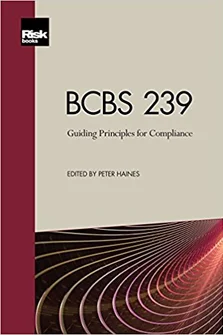Data Architecture and Aggregation
Jerry Goddard
Data Architecture and Aggregation
Introduction
Risk Data Aggregation and Risk Reporting: A Regulatory Perspective
A Regulatory Perspective
Delivering Compliance: Challenges and Opportunities
BCBS 239 at Commerzbank: Applying a Central Standards/De-central Implementation Approach
Data Governance: Embedding a Data Governance Process
What is the Problem with Risk Data, and How Can Executive Data Governance Address it?
Data Architecture and Aggregation
Managing Data Quality: Completeness, Accuracy and Timeliness
This chapter will examine the issue of data architecture and its role in creating a highly aggregable data estate. The background of data architectures in finance is discussed to provide an understanding of the nature of the problem, and why this is seen as a key component in BCBS 239 programmes. Data architectures will be shown to be not just for the technical specialist; with data being one of the most valuable resources in a bank, all areas have to consider their data needs and articulate key concepts to the builders. This understanding of requirements at a conceptual level is fundamental to the creation of an environment where information is manageable. The main component of the data model will be shown to be a powerful tool for both users and technicians, and options for a data model will be considered.
The banking sector has grown exponentially since the early 1990s, and technology has helped to facilitate this growth. However, silos are still common – not least those in risk and finance. The practical application of a data model to the information requirements of these teams will show how a data-centric approach could significantly reduce costs, increase operational
Copyright Infopro Digital Limited. All rights reserved.
As outlined in our terms and conditions, https://www.infopro-digital.com/terms-and-conditions/subscriptions/ (point 2.4), printing is limited to a single copy.
If you would like to purchase additional rights please email info@risk.net
Copyright Infopro Digital Limited. All rights reserved.
You may share this content using our article tools. As outlined in our terms and conditions, https://www.infopro-digital.com/terms-and-conditions/subscriptions/ (clause 2.4), an Authorised User may only make one copy of the materials for their own personal use. You must also comply with the restrictions in clause 2.5.
If you would like to purchase additional rights please email info@risk.net










